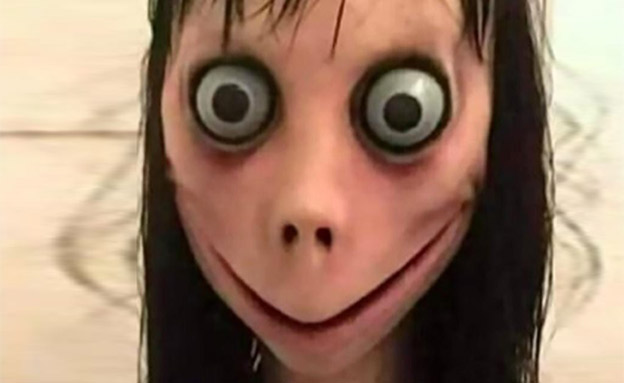The Momo Challenge: A Terrible Suicide Game, Or A Hoax?
It happens every few years. A specific phenomenon spreads on social media, sweeping away countless people (especially young people) or even endangering their lives. For example, in recent years we have heard of young people who were injured after searching for strange Pokémon in public spaces as part of the game “Pokémon Go”; the “Superman” challenge in which young people tried to “fly” in the air while their friends were supposed to catch them, but unfortunately many fell and got hurt; A challenge that made young people in New York climb on moving trains (!), like in the game “Subway Surfers”; or the Blue Whale Challenge from 2016, which was mainly popular in Russia, in which participants had to go through various self-harm tasks for 50 days, the last of which was suicide. Or the Momo Challenge, which we will focus on in the following article.
At this point, the parent in me, as the father of daughters who recently got their first tablet, should say something about today’s youth, the importance of controlling the content your kids watch, and other sentences that should make me feel old. But I’m not here as a parent, but as part of a website that presents you with scary myths from around the world – especially if it has creepy dolls or whatever it’s supposed to be.
In about 2018, the world was crazy about the Momo doll, which also supposedly gave birth to a suicide game. As in the case of the Huggy Wuggy storm, we heard reports of children being physically or mentally harmed, parents pleading to monitor the content our children see, interviews with education experts who describe the potential harms, and we even have specific references in horror films.
A few years later, we must ask what was the Momo doll, what is the Momo Challenge story, why this is so bad, and what impact it has on the lives of our children at the current point in time?
It All Started As A Statue: Who Was Behind The Momo Challenge?
The story of Momo the doll begins even before it became a disturbing network phenomenon and, some would say, a suicide game. Momo is generally a harmless but strange statue that looks like it comes out of horror mythology. As with mythological creatures in different folklores, we get a combination of human beings and animals.
In particular, Momo’s body is half woman and half bird, with breasts like a regular girl but also claws instead of legs. Momo has pale skin, a distorted face, large but lidless eyes, and a pretty wide mouth with a disturbing smile. The original appearance looks like it came straight out of the catalog of movies like “Smile,” “Truth or Dare,“ or any other horror film whose fear factor is based on people smiling eerily before doing something terrible to themselves or others.
The sculpture, named “Mother Bird,“ was created in 2006 by a Japanese artist named Kisuke Aiso, head of a special effects company called “Link Factory.“ The “Mother Bird“ sculpture, made from rubber and a few natural oils, was part of an exhibition of horror-themed figures. Aiso got inspiration from the legend of Ubume, a venomous and dangerous figure of a venomous bird that kidnaps children according to Japanese folklore.
Who Started The Momo Challenge?
After the sculpture was displayed in a gallery in Tokyo, several Spanish-speaking users found the images and turned them into the inspiration for an urban legend, initially in Spanish. They linked the figure to a mysterious phone number and malicious messages, the extremes of which encourage children to kill themselves.
From there, it started to spread like a silly TikTok challenge. All over the world, we received reports of children and teenagers being harassed on various platforms by a user who answered the arbitrary name “Momo“ with a representative profile picture of the threatening character. That user allegedly urged them to carry out dangerous tasks, such as violently harming others, self-harm, and even suicide. Otherwise, they would be bewitched terribly.
The artist himself said that he had received death threats, as had another artist who was mistakenly linked to the creation of the statue. Aiso solemnly announced that following the guilt he felt for the actions caused by the character he created, if you believe the stories, he had thrown the statue in the trash to “remove the curse.” “It doesn’t exist anymore; it was never meant to last,“ he described in an interview.” “It was rotten, and I threw it away. The children can be reassured Momo is dead – she doesn’t exist, and the curse is gone.”
“On one hand, they have caused me nothing but trouble,“ he added. “But on the other hand, as an artist, I have a little sense of appreciation that my art piece has been seen across the world.“
Time Has Proven: The Monster Is Not That Terrible
A great panic was created around the Momo suicide challenge, with claims that the phenomenon had reached global proportions, which prompted the intervention of education and health experts. As part of the panic, we heard the phenomenon had reached young ones across the globe, for example, through advertisements in apps or well-known videos they saw during “Peppa Pig,” “Fortnite,“ and others. The fear was of exposure to tens of thousands of children, some of whom would harm others or themselves. Children are naturally curious, and in the months after the story got its first headlines, we encountered quite a few young people asking, for example, what the Momo telephone number was or how to play The Momo Challenge, perhaps because they would be happy to receive a message from the creature at night.
One of the main accusers of spreading the Momo myth is Kim Kardashian, who shared a picture of Momo with her 145 million followers. Kardashian warned the parents among them (estimated: there were quite a few men there) that there were messages and announcements from Momo hidden in the content available on YouTube, a claim that the world’s largest video site denied.
Very soon, news began to appear in the press about “children who committed suicide because of a WhatsApp challenge,” some schools banned children from coming on Halloween with a Momo costume, and experts tried to explain the phenomenon (or at least publicize themselves). It seemed, for a moment, that Momo would take over the world.
Is The Momo Challenge Real, Or A Hoax?
In retrospect, without underestimating the adverse effects or dangers of online challenges, this is probably a typical case of an internet urban legend or even a hoax that does not reach the monstrous proportions presented. We don’t know how many people died from The Momo Challenge, if any.
According to reports, the number of complaints about the Momo game was minimal, and most law enforcement agencies worldwide could not confirm that the game directly harmed a person.
Although it is difficult to be 100% sure about this, this is another classic case that got out of proportion. One of the reasons is incorrect reports published in the media and social networks worldwide, or in other words, rumors or fake news, instead of documented cases. This case proves once again that truth is not too important in the age of social media.
The Momo Challenge (Or Something Similar) Is Becoming A Cultural Phenomenon
Fortunately, we have not yet had a horror film in which the main villain is Momo, nor one that depicts the rather strange story that is taking place here: this is in contrast, for example, to the menacing character of Slenderman, that super thin and tall creature with extremely long arms, a white head but no facial features or hair, who, according to Internet urban legend (“Creepypasta”) kidnaps children and harms them. Slenderman was born in an Internet forum, but from there, he came to videos, horror games, and a terrible movie starring Joey King.
Momo Short Horror Movies
Most movies that tried to ride on Momo’s virality were short, but some were impressively successful, with millions and sometimes even millions of views.
Here, for example, is a seven-minute video by the horror shorties “Alexanderthetitan,” which has received about 15 million views. The video shows a young girl who encounters a woman in the shower and then in the bedroom, but when the woman turns around, we realize that her face, you’ve probably guessed, is Momo’s. So it’s true that this movie isn’t horrifying and even quite ridiculous, at least in my opinion (for example, the scene where Momo tries to enter the room through the door but somehow ends up in the closet to get out of it and then out the door, to get back in through the door and probably out through the window). Still, like the urban legend – you can’t argue with virality.
Do you want another example, even stranger? Please! We also found a shorter horror movie online (about three and a half minutes), named “Momo – The Pool”. It was released less than a year ago and managed to get, for some reason, about 8.5 million views. In the video, we see a guy who sees something that looks like Momo’s head in his pool but, for some reason, has trouble getting it out. When he gets the net, the mysterious head disappears, appears for a second among the trees, and in a pipe, heaven forbid. This leads us to the moment Momo emerges from the pool as if she were Samara in “The Ring” and does terrible things to the hero.
This film was far from good even compared to the previous one (especially the representation of Momo, which seems too amateurish here), but who am I to argue with a few million viewers riding on a viral character?
A quick search on YouTube found several versions of short Momo videos: on Halloween, in the shower, playing hide-and-seek, and more. Maybe there are some porn movies of Momo, but I am too afraid to ask Google because it is too weird, so Google would think I am weird and suggest ads of strange stuff.
Anyway, you already understand the principle, don’t you? What interests us more are full-length horror films, which will naturally be more invested and meaningful.
Horror Films About The Momo Doll
Nevertheless, we can count on more significant horror films that will try to ride the viral wave and present villain characters who are very reminiscent of Momo, even if we can count them on the fingers of one hand.
The problem is that, except for another film that corresponds to Momo’s story but does not present it directly, the other projects have been in development for several years, and it is unclear when we will get to see them on the big or small screen.
The fear is that when they come out, the mythology surrounding the Momo suicide game may be much less impressive than it was a few years ago, so perhaps the creators missed the train here. On the other hand, we may get decent films here, not just ones made in a few days to capitalize on the buzz around something (yes, we mean you, the Winnie the Pooh and Mickey Mouse horror films).
Grimcutty (2022)

In 2022, we got “Grimcutty,” an average horror film from Hulu, which directly corresponds to Momo’s story. The film is about an internet meme that resembles Momo in appearance, although not in a significant way because our Momo may have copyright.
Grimcutty is an evil creature that appears on children’s phones and causes them to hurt themselves and others, such as one of the children stabbing his mother to death. Unsurprisingly, such cases create panic in the community, especially when the creepy character comes off the screens and begins to hurt those exposed to her. At first, a girl named Ash (Sarah Wolfkind) encounters Grimkati in real life, but of course, it is a horror movie in which no one believes her until the bodies start piling up, blah, blah, blah.
“Grimcutty” is far from perfect, and I am being very gentle here. It has a lot of flaws in the plot, and it is difficult to say that it is too scary, including the problematic design of the monstrous villain. Nevertheless, for fans of horror films based on urban legends, even when they are not good (oops), it is enjoyable enough to get through something like an hour and a half.
Untitled Momo Horror Film (TBA)
In 2019, we heard that Orion Pictures – the veteran American production and distribution company responsible for films such as “The Silence of the Lambs,” “Amadeus,” “Platoon,” “Dancing with Wolves,” “Terminator“ and “The Addams Family“ (1991) – would collaborate with Roy Lee’s Vertigo Entertainment and producer Takashige (Taka) Ichise to develop a horror film based on Momo.
These names may not tell you much, but it’s important to remember that the collaboration between Lee and Ichishe gave rise to the films “The Grudge” and “The Ring.” Lee also made “It” films, some of the most profitable films in cinema history. Unfortunately, we haven’t received much new information about the project since that initial announcement.
Getaway (TBA)

Another film in the production process is “Getaway,” which is also influenced by the Momo challenge. At the center of the plot here is a group of young people who find themselves dealing with frightening events during their stay in an isolated cabin in the woods, the last summer before summer – events that are probably related to a story that one of them tells about the urban legend of Momo and the fact that those young people will probably behave in an idiotic way, while they disappear and die.
This film is in a more advanced stage than the previous one because it already has a director (Lilton Stewart II) and a young and not very well-known cast, which consists mainly of young men and women with rather lengthy names that look good.
It has not yet been announced when and on which platform the film will be released.
What Can We Learn From The Momo Hoax?
The Momo Hoax is another example of internet legends that are getting a little out of hand, with a common denominator for some of these myths: a distorted human figure, distribution via the internet (with the potential to go viral like wildfire), and a connection to children or teenagers, which can be harmful. The case shows how social fears can spread quickly in the digital age, for better and for worse.
Even if the monster here may not be that terrible, and its effects are less unusual than advertised, this is an excellent opportunity for parents to monitor the content that their children watch, talk to them about online activity and its dangers, and create an atmosphere that encourages sharing. Of course, all those monitoring and training measures, such as installing content filtering software, controlling the apps children download to their devices, and limiting screen time, can help.
So, the concern surrounding Momo subsided until the films in question would reach the big or small screen. Until that happens, we are already waiting for the next challenge that will drive the youth crazy – hoping that it will be less dangerous, on paper or in reality.




